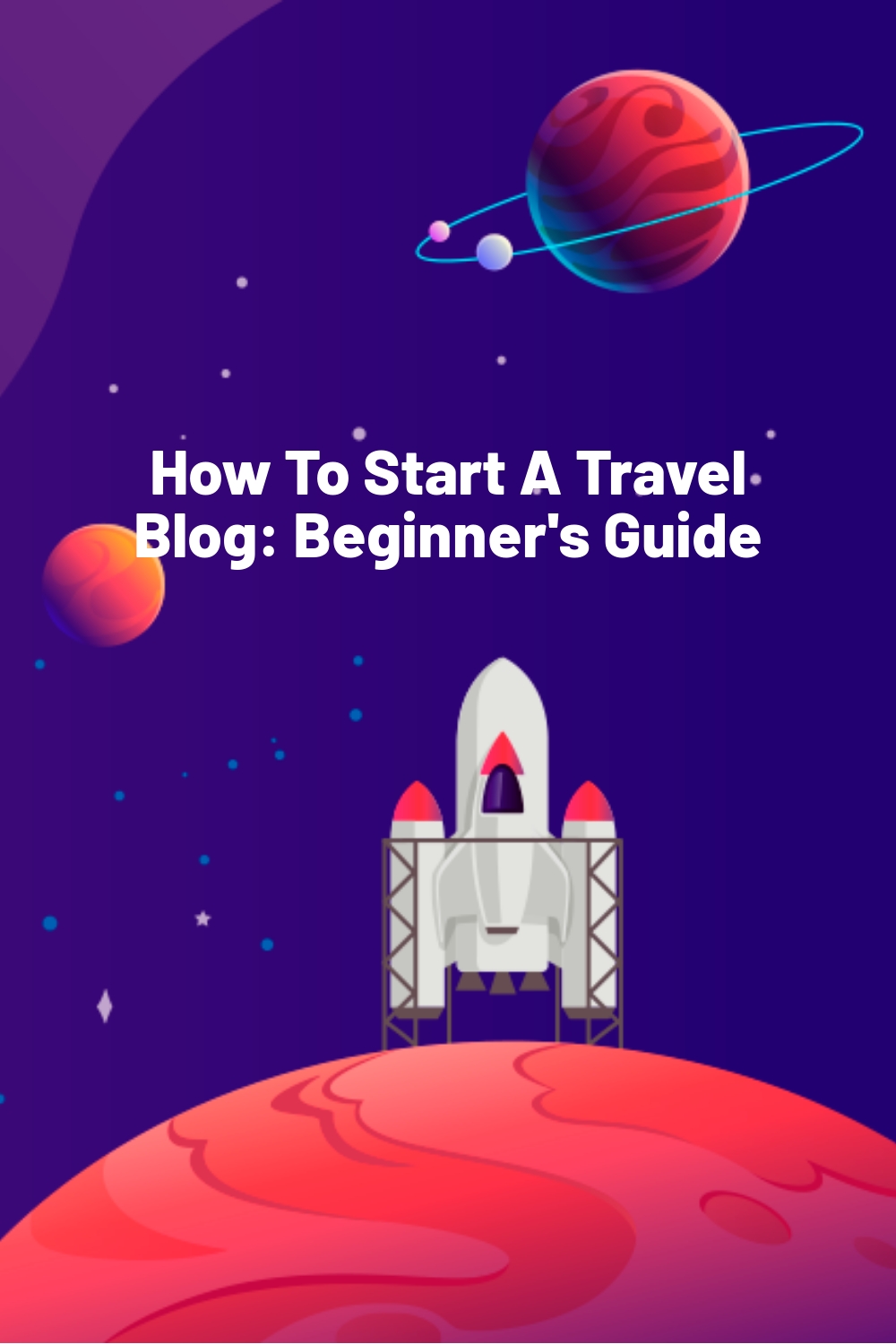WPLift is supported by its audience. When you purchase through links on our site, we may earn an affiliate commission.
How To Start A Travel Blog: Beginner’s Guide
So you want to start a travel blog? Congrats! That’s awesome. I’ve been known to dabble in travel blogging and it’s a nice change from writing more technical articles like this one.
But if you want to create your own travel blog, you’re going to need your own website…and that might not be as easy for you as it is to hop on a plane and follow the banana pancake trail!
If you want to start a travel blog but aren’t sure where to actually start, this post is for you. I’ll give you a beginner-friendly tutorial on:
- What you need to launch a travel blog with self-hosted WordPress (my recommended tool!)
- How to sign up for hosting and install WordPress on your site
- Where to find something called a “theme” to make your travel blog look awesome
- Some cool “plugins” that you can use to add functionality like a map of all your travel destinations
The whole thing will only cost you $50-60 for your entire first year of travel blogging.
Ready to start travel blogging? Let’s jump in!
Here’s What You Need To Start a Travel Blog
Here’s the bare minimum of what you’ll need to make your own travel blog:
- Web hosting – this is what powers your website and makes it available to the entire Internet. If you want a website, you need web hosting. No way around it!
- A domain name – this is how people will find your travel blog – make it unique and memorable. But remember – I think there are already enough travel blogs that start with “nomadic”! If you need some help, you can use a blog name generator.
- WordPress.org software – WordPress is the world’s most popular software to create a website. It’s also super flexible and beginner-friendly. BUT NOTE – WordPress.org is NOT the same as WordPress.com. I don’t recommend WordPress.com because it’s not as flexible.
- A WordPress theme – your theme determines how your travel blog looks. You can find tons of cool themes dedicated specifically to travel blogging.
- WordPress plugins – these make it easy to add additional functionality to your blog. For example, you can create a map of your travel destinations, galleries of your travel photos, and tons more.
With these 5 things, you’ll have a rockin’ travel blog. The only thing left is the gumption to consistently post blogs, grow a following, and, oh yeah, travel the world.
Step 1: Choose Hosting And Domain For Your Travel Blog
The first thing that you’ll need to get started is your hosting and domain name. This definitely isn’t sexy – but these two are necessary precursors to getting your travel blog online.
For hosting, I recommend SiteGround. It’s where I host my own travel blog and it’s also where we host this site. Some reasons we love SiteGround are:
- It’s affordable for beginners – its monthly cost is less than the price of a latte at Starbucks
- They have awesome, friendly support if you ever run into trouble
- Your website will load fast, which is super important
To sign up, click the button below to go to SiteGround and get our special deal:

Article Continues Below
Then, click the button to CHOOSE PLAN:

For beginners, I recommend the StartUp plan because it only costs $3.95 per month (billed yearly).
For most beginners, it’s plenty of power. Just be aware that it only lets you host one website. If you think you’ll want more than one website, the GrowBig plan is probably a better option:

Once you click that big GET STARTED button, you’ll need to enter your domain name on the next screen. This will cost you ~$15 per year on top of what you pay for hosting:

I tried to come up with an awesome travel blog domain name!
After that, you’ll need to fill in your account details and enter payment details. The whole thing should cost you ~$62 and that price will cover running your travel blog for an entire year:

Step 2: Install Self-Hosted WordPress Software
Once you finish signing up for hosting, the next thing that you need to do is install the WordPress.org software on your new host.
Sounds intimidating, right? Nah, don’t worry.
Even the most off-the-grid backpacker can figure it out because SiteGround makes it super simple to install WordPress.
The first time that you log in to your SiteGround dashboard, you’ll see their Website Setup Wizard popup.
All you need to do is check the box for Get WordPress pre-installed on this account and click PROCEED:

On the next page, you’ll enter some basic details about your travel blog and then SiteGround will automatically install WordPress for you.
It might also ask you to choose a WordPress theme – but don’t stress too much about that because we’re going to cover choosing a travel blog theme in the next section.
Once you complete the signup wizard, you can log in to your travel blog’s dashboard by adding “/wp-admin” to the end of your domain name. For example, “wanderingnomadicvagabond.com/wp-admin”.
Step 3: Choose A Travel Blog Theme
Your “theme” dictates how your site looks to visitors. As a travel blogger, you probably want a theme that fits your aesthetic and lets you easily display your travel photos.
For that reason, I put together a few of my favorite WordPress travel blog themes. I’ll include both free and premium travel blog themes, but you can always search Google for more choice:
WPVoyager

This is a neat-looking travel blog with a big focus on imagery and a built-in Google Maps integration. It’s pretty much a one-stop shop that helps you get started right away.
While it’s pretty gorgeous and super convenient, it will cost you $59 to purchase.
Travel Notes

Travel Notes is a free WordPress travel blog theme that you can get at WordPress.org. It doesn’t have the advanced style offered by WPVoyager, but it’s still pretty good-looking and you can’t beat free!
Divi Theme

Divi is a powerful multipurpose theme that lets you build your blog using a neat drag and drop page builder (read our review for more details). While it’s not dedicated specifically to travel blogs, I’ve seen tons of travel websites using Divi to power their site.
Divi costs $89, but for that price you’ll also get access to a bunch of other products and a huge third-party community.
Once you find a travel blog theme that you like, you can install it by going to Appearance → Themes → Add New inside your WordPress dashboard.

Step 4: Install Helpful Plugins For Travel Blogs
Whereas themes are mostly about changing how your site looks, plugins are more about adding new functionality to your travel blog.
That could be a small thing like a contact form or something big like an entire eCommerce store.
There are tens of thousands of WordPress plugins, which can sometimes make it hard to find the exact plugins that you need. I’ll try to help, though!
There are some plugins that all WordPress sites need. Because they’re so essential, we’ve put together lists covering many of them. You can peruse and choose the one that you like:
But you’ll also probably want some plugins that are specific to travel blogging. Here are some of those to get you started:
- A good photo gallery plugin to share your travel pictures
- Plugins to help you integrate your Instagram feed
- Interactive World Maps, a plugin that helps you display cool maps of your travels.
And if you need a specific function that I didn’t cover, you can always turn to Google. Like I said, there are tens of thousands of WordPress plugins, so you can probably find what you need.
To install the plugins that you find, head to Plugins → Add New in your WordPress dashboard:

Get Out There And Start a Travel Blog
At this point, you should have everything that you need to start a travel blog using WordPress. Remember, this is what it takes to get started:
- Cheap WordPress hosting – we recommend SiteGround
- A cool domain name that doesn’t include “nomadic”
- WordPress.org software
- A travel blog theme
- Some helpful travel plugins
Now, get out there and start sharing your travels with the world!







